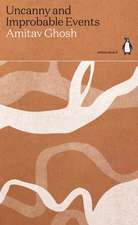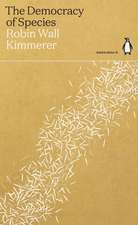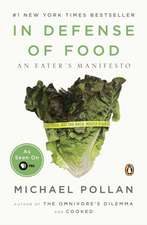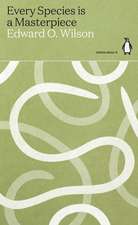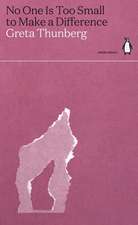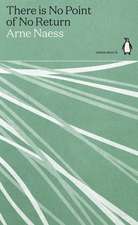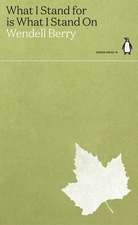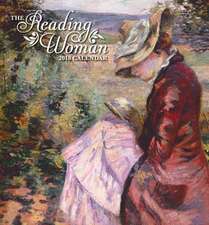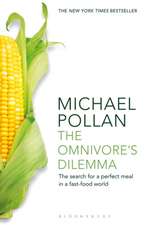Food Rules: An Eater's Manual
Autor Michael Pollanen Limba Engleză Paperback – 26 mai 2010
Eat food. Mostly plants. Not too much.
Using those seven simple words as his guide, internationally-acclaimed food journalist Michael Pollan offers this indispensable handbook for anyone concerned about health and food. Sensible, easy to use and written in plain English, Food Rules is a set of memorable adages or designed to help you eat real food in reasonable amounts, gathered from a wide variety of sources: nutritionists, anthropologists, ancient cultures - and grandmothers.
Whether at the supermarket, a restaurant or an all-you-can-eat buffet, this handy, pocket-size resource is the perfect manual for anyone who would like to become more mindful of the food we eat.
'In more than four decades I have come across nothing more intelligent, sensible and simple to follow than these principles'
The New York Times
'Instantly makes redundant all diet books and 99 per cent of discussions around healthy eating ... Sense, at last'
Daily Mail, praise for In Defence of Food
'Pollan invites us to grab our pots and pans and cook some real food for dinner'
Time Out, praise for In Defence of Food
'Read this witty book for a healthier life and diet'
The Times, praise for In Defence of Food
Michael Pollan has been writing for over twenty years about the places where the human and natural worlds intersect: food, agriculture, gardens, drugs, and architecture. The Omnivore's Dilemma, about the ethics and ecology of eating, was named one of the ten best books of 2006 by the New York Times and the Washington Post. He is also the author of The Botany of Desire, A Place of My Own and Second Nature and, most recently, In Defence of Food.
| Toate formatele și edițiile | Preț | Express |
|---|---|---|
| Paperback (4) | 40.62 lei 24-30 zile | +12.12 lei 4-10 zile |
| Penguin Books – 25 aug 2021 | 40.62 lei 24-30 zile | +12.12 lei 4-10 zile |
| Penguin Books – 26 mai 2010 | 41.09 lei 24-30 zile | +12.87 lei 4-10 zile |
| Penguin Books – 31 dec 2009 | 76.28 lei 3-5 săpt. | |
| Penguin Books – 28 oct 2013 | 108.28 lei 3-5 săpt. | +18.23 lei 4-10 zile |
Preț: 41.09 lei
Preț vechi: 49.91 lei
-18% Nou
7.86€ • 8.18$ • 6.49£
Carte disponibilă
Livrare economică 27 martie-02 aprilie
Livrare express 07-13 martie pentru 22.86 lei
Specificații
ISBN-10: 0141048689
Pagini: 160
Ilustrații: Illustrations
Dimensiuni: 111 x 181 x 9 mm
Greutate: 0.1 kg
Editura: Penguin Books
Colecția Penguin
Locul publicării:London, United Kingdom
Recenzii
Pollan invites us to grab our pots and pans and cook some real food for dinner
Read this witty book for a healthier life and diet
Notă biografică
For the past twenty years, Michael Pollan has been writing about the places where the human and natural worlds intersect: food, agriculture, gardens, drugs, and architecture. The Omnivore's Dilemma, about the ethics and ecology of eating, was named one of the ten best books of 2006 by the New York Times and the Washington Post. He is also the author of The Botany of Desire, A Place of My Own and Second Nature and, most recently, In Defence of Food.
Descriere
In sixty-four bite-sized pieces of advice, Michael Pollan's Food Rules tells you everything you need to know to eat healthily, dine happily and live well.
Eat food. Mostly plants. Not too much.
Using those seven simple words as his guide, internationally-acclaimed food journalist Michael Pollan offers this indispensable handbook for anyone concerned about health and food. Sensible, easy to use and written in plain English, Food Rules is a set of memorable adages or designed to help you eat real food in reasonable amounts, gathered from a wide variety of sources: nutritionists, anthropologists, ancient cultures - and grandmothers.
Whether at the supermarket, a restaurant or an all-you-can-eat buffet, this handy, pocket-size resource is the perfect manual for anyone who would like to become more mindful of the food we eat.
'In more than four decades I have come across nothing more intelligent, sensible and simple to follow than these principles'
The New York Times
'Instantly makes redundant all diet books and 99 per cent of discussions around healthy eating ... Sense, at last'
Daily Mail, praise for In Defence of Food
'Pollan invites us to grab our pots and pans and cook some real food for dinner'
Time Out, praise for In Defence of Food
'Read this witty book for a healthier life and diet'
The Times, praise for In Defence of Food
Michael Pollan has been writing for over twenty years about the places where the human and natural worlds intersect: food, agriculture, gardens, drugs, and architecture. The Omnivore's Dilemma, about the ethics and ecology of eating, was named one of the ten best books of 2006 by the New York Times and the Washington Post. He is also the author of The Botany of Desire, A Place of My Own and Second Nature and, most recently, In Defence of Food.
Extras
Eating in our time has gotten complicated— needlessly so, in my opinion. I will get to the “needlessly” part in a moment, but consider first the complexity that now attends this most basic of creaturely activities. Most of us have come to rely on experts of one kind or another to tell us how to eat—doctors and diet books, media accounts of the latest findings in nutritional science, government advisories and food pyramids, the proliferating health claims on food packages. We may not always heed these experts’ advice, but their voices are in our heads every time we order from a menu or wheel down the aisle in the supermarket. Also in our heads today resides an astonishing amount of biochemistry. How odd is it that everybody now has at least a passing acquaintance with words like “antioxidant,” “saturated fat,” “omega-3 fatty acids,” “carbohydrates,” “polyphenols,” “folic acid,” “gluten,” and “probiotics”? It’s gotten to the point where we don’t see foods anymore but instead look right through them to the nutrients (good and bad) they contain, and of course to the calories—all these invisible qualities in our food that, properly understood, supposedly hold the secret to eating well.
But for all the scientific and pseudoscientific food baggage we’ve taken on in recent years, we still don’t know what we should be eating. Should we worry more about the fats or the carbohydrates? Then what about the “good” fats? Or the “bad” carbohydrates, like highfructose corn syrup? How much should we be worrying about gluten? What’s the deal with artificial sweeteners? Is it really true that this breakfast cereal will improve my son’s focus at school or that other cereal will protect me from a heart attack? And when did eating a bowl of breakfast cereal become a therapeutic procedure?
A few years ago, feeling as confused as everyone else, I set out to get to the bottom of a simple question: What should I eat? What do we really know about the links between our diet and our health? I’m not a nutrition expert or a scientist, just a curious journalist hoping to answer a straightforward question for myself and my family.
Most of the time when I embark on such an investigation, it quickly becomes clear that matters are much more complicated and ambiguous—several shades grayer—than I thought going in. Not this time. The deeper I delved into the confused and confusing thicket of nutritional science, sorting through the long-running fats versus carbs wars, the fiber skirmishes and the raging dietary supplement debates, the simpler the picture gradually became. I learned that in fact science knows a lot less about nutrition than you would expect—that in fact nutrition science is, to put it charitably, a very young science. It’s still trying to figure out exactly what happens in your body when you sip a soda, or what is going on deep in the soul of a carrot to make it so good for you, or why in the world you have so many neurons—brain cells!—in your stomach, of all places. It’s a fascinating subject, and someday the field may produce definitive answers to the nutritional questions that concern us, but—as nutritionists themselves will tell you—they’re not there yet. Not even close. Nutrition science, which after all only got started less than two hundred years ago, is today approximately where surgery was in the year 1650—very promising, and very interesting to watch, but are you ready to let them operate on you? I think I’ll wait awhile. But if I’ve learned volumes about all we don’t know about nutrition, I’ve also learned a small number of very important things we do know about food and health. This is what I meant when I said the picture got simpler the deeper I went.
There are basically two important things you need to know about the links between diet and health, two facts that are not in dispute. All the contending parties in the nutrition wars agree on them. And, even more important for our purposes, these facts are sturdy enough that we can build a sensible diet upon them.
Here they are:
Fact 1. Populations that eat a so-called Western diet— generally defined as a diet consisting of lots of processed foods and meat, lots of added fat and sugar, lots of refined grains, lots of everything except vegetables, fruits, and whole grains—invariably suffer from high rates of the so-called Western diseases: obesity, type 2 diabetes, cardiovascular disease, and cancer. Virtually all of the obesity and type 2 diabetes, 80 percent of the cardiovascular disease, and more than a third of all cancers can be linked to this diet. Four of the top ten killers in America are chronic diseases linked to this diet. The arguments in nutritional science are not about this well-established link; rather, they are all about identifying the culprit nutrient in the Western diet that might be responsible for chronic diseases. Is it the saturated fat or the refined carbohydrates or the lack of fiber or the transfats or omega-6 fatty acids—or what? The point is that, as eaters (if not as scientists), we know all we need to know to act: This diet, for whatever reason, is the problem.
Fact 2. Populations eating a remarkably wide range of traditional diets generally don’t suffer from these chronic diseases. These diets run the gamut from ones very high in fat (the Inuit in Greenland subsist largely on seal blubber) to ones high in carbohydrate (Central American Indians subsist largely on maize and beans) to ones very high in protein (Masai tribesmen in Africa subsist chiefly on cattle blood, meat, and milk), to cite three rather extreme examples. But much the same holds true for more mixed traditional diets. What this suggests is that there is no single ideal human diet but that the human omnivore is exquisitely adapted to a wide range of different foods and a variety of different diets. Except, that is, for one: the relatively new (in evolutionary terms) Western diet that most of us now are eating. What an extraordinary achievement for a civilization: to have developed the one diet that reliably makes its people sick! (While it is true that we generally live longer than people used to, or than people in some traditional cultures do, most of our added years owe to gains in infant mortality and child health, not diet.)
There is actually a third, very hopeful fact that flows from these two: People who get off the Western diet see dramatic improvements in their health. We have good research to suggest that the effects of the Western diet can be rolled back, and relatively quickly.* In one analysis, a typical American population that departed even modestly from the Western diet (and lifestyle) could reduce its chances of getting coronary heart disease by 80 percent, its chances of type 2 diabetes by 90 percent, and its chances of colon cancer by 70 percent.*
* For a discussion of the research on the Western diet and its alternatives see my previous book, In Defense of Food (New York: Penguin Press, 2008). Much of the science behind the rules in this book can be found there.
Yet, oddly enough, these two (or three) sturdy facts are not the center of our nutritional research or, for that matter, our public health campaigns around diet. Instead, the focus is on identifying the evil nutrient in the Western diet so that food manufacturers might tweak their products, thereby leaving the diet undisturbed, or so that pharmaceutical makers might develop and sell us an antidote for it. Why? Well, there’s a lot of money in the Western diet. The more you process any food, the more profitable it becomes. The healthcare industry makes more money treating chronic diseases (which account for three quarters of the $2 trillion plus we spend each year on health care in this country) than preventing them. So we ignore the elephant in the room and focus instead on good and evil nutrients, the identities of which seem to change with every new study. But for the Nutritional Industrial Complex this uncertainty is not necessarily a problem, because confusion too is good business: The nutrition experts become indispensable; the food manufacturers can reengineer their products (and health claims) to reflect the latest findings, and those of us in the media who follow these issues have a constant stream of new food and health stories to report. Everyone wins. Except, that is, for us eaters.
* The diet specified in this analysis is characterized by a low intake of transfats; a high ratio of polyunsaturated fats to saturated fats; a high whole-grain intake; two servings of fish a week; the recommended daily allowance of folic acid; and at least five grams of alcohol a day. The lifestyle changes include not smoking, maintaining a body mass index (BMI) below 25, and thirty minutes a day of exercise. As the author Walter Willett writes, “[T]he potential for disease prevention by modest dietary and lifestyle changes that are readily compatible with life in the 21st century is enormous.” “The Pursuit of Optimal Diets: A Progress Report,” Nutritional Genomics: Discovering the Path to Personalized Nutrition, eds. Jim Kaput and Raymond L. Rodriguez (New York: John Wiley &Sons, 2006).
As a journalist I fully appreciate the value of widespread public confusion: We’re in the explanation business, and if the answers to the questions we explore got too simple, we’d be out of work. Indeed, I had a deeply unsettling moment when, after spending a couple of years researching nutrition for my last book, In Defense of Food, I realized that the answer to the supposedly incredibly complicated question of what we should eat wasn’t so complicated after all, and in fact could be boiled down to just seven words:
Eat food. Not too much. Mostly plants.
This was the bottom line, and it was satisfying to have found it, a piece of hard ground deep down at the bottom of the swamp of nutrition science: seven words of plain English, no biochemistry degree required. But it was also somewhat alarming, because my publisher was expecting a few thousand more words than that. Fortunately for both of us, I realized that the story of how so simple a question as what to eat had ever gotten so complicated was one worth telling, and that became the focus of that book.
The focus of this book is very different. It is much less about theory, history, and science than it is about our daily lives and practice. In this short, radically pared-down book, I unpack those seven words of advice into a comprehensive set of rules, or personal policies, designed to help you eat real food in moderation and, by doing so, substantially get off the Western diet. The rules are phrased in everyday language; I deliberately avoid the vocabulary of nutrition or biochemistry, though in most cases there is scientific research to back them up.
This book is not antiscience. To the contrary, in researching it and vetting these rules I have made good use of science and scientists. But I am skeptical of a lot of what passes for nutritional science, and I believe that there are other sources of wisdom in the world and other vocabularies in which to talk intelligently about food. Human beings ate well and kept themselves healthy for millennia before nutritional science came along to tell us how to do it; it is entirely possible to eat healthily without knowing what an antioxidant is. So whom did we rely on before the scientists (and, in turn, governments, public health organizations, and food marketers) began telling us how to eat? We relied of course on our mothers and grandmothers and more distant ancestors, which is another way of saying, on tradition and culture. We know there is a deep reservoir of food wisdom out there, or else humans would not have survived and prospered to the extent we have. This dietary wisdom is the distillation of an evolutionary process involving many people in many places figuring out what keeps people healthy (and what doesn’t), and passing that knowledge down in the form of food habits and combinations, manners and rules and taboos, and everyday and seasonal practices, as well as memorable sayings and adages. Are these traditions infallible? No. There are plenty of old wives’ tales about food that on inspection turn out to be little more than superstitions. But much of this food wisdom is worth preserving and reviving and heeding. That is exactly what this book aims to do.
Food Rules distills this body of wisdom into sixtyfour simple rules for eating healthily and happily. The rules are framed in terms of culture rather than science, though in many cases science has confirmed what culture has long known; not surprisingly, these two different vocabularies, or ways of knowing, often come to the same conclusion (as when scientists recently confirmed that the traditional practice of eating tomatoes with olive oil is good for you, because the lycopene in the tomatoes is soluble in oil, making it easier for your body to absorb). I have also avoided talking much about nutrients, not because they aren’t important, but because focusing relentlessly on nutrients obscures other, more important truths about food.
Foods are more than the sum of their nutrient parts, and those nutrients work together in ways that are still only dimly understood. It may be that the degree to which a food is processed gives us a more important key to its healthfulness: Not only can processing remove nutrients and add toxic chemicals, but it makes food more readily absorbable, which can be a problem for our insulin and fat metabolism. Also, the plastics in which processed foods are typically packaged can present a further risk to our health. This is why many of the rules in this book are designed to help you avoid heavily processed foods—which I prefer to call “edible foodlike substances.”




